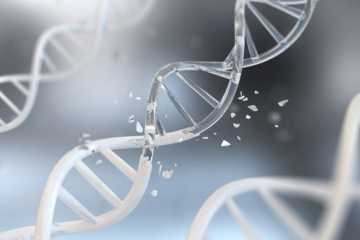We found 87 results that contain "bi"
Posted on: #iteachmsu

Genetics and Molecular Biology
http://www.scielo.br/revistas/gmb/iaboutj.htm#001
https://venturit.atlassian.net/browse/IT-1478
Genetics and Molecular Biology is abstracted or indexed in:
PubMed
Science Citacion Index Expanded
Current Contents/Life Sciences
ISI Web of Science
Biotechnology Citation Index
Biological Abstracts
Excerpta Medica
Genetics Abstracts
Animal Breeding Abstracts
Plant Breeding Abstracts
Chemical Abstracts
Referativnyi Zhurnal (Abstracts Journal, Russia)
Periódica (UNAM-Mexico)
Lilacs
https://venturit.atlassian.net/browse/IT-1478
Genetics and Molecular Biology is abstracted or indexed in:
PubMed
Science Citacion Index Expanded
Current Contents/Life Sciences
ISI Web of Science
Biotechnology Citation Index
Biological Abstracts
Excerpta Medica
Genetics Abstracts
Animal Breeding Abstracts
Plant Breeding Abstracts
Chemical Abstracts
Referativnyi Zhurnal (Abstracts Journal, Russia)
Periódica (UNAM-Mexico)
Lilacs
Posted by:
Chathuri Super admin..

Posted on: #iteachmsu


Genetics and Molecular Biology
http://www.scielo.br/revistas/gmb/iaboutj.htm#001
https://venturit....
https://venturit....
Posted by:
Wednesday, Dec 23, 2020
Posted on: #iteachmsu

The relationship between science and technology
Science, technology and innovation each represent a successively larger category of activities which are highly interdependent but distinct. Science contributes to technology in at least six ways: (1) new knowledge which serves as a direct source of ideas for new technological possibilities; (2) source of tools and techniques for more efficient engineering design and a knowledge base for evaluation of feasibility of designs; (3) research instrumentation, laboratory techniques and analytical methods used in research that eventually find their way into design or industrial practices, often through intermediate disciplines; (4) practice of research as a source for development and assimilation of new human skills and capabilities eventually useful for technology; (5) creation of a knowledge base that becomes increasingly important in the assessment of technology in terms of its wider social and environmental impacts; (6) knowledge base that enables more efficient strategies of applied research, development, and refinement of new technologies.
Posted by:
Greg Thomsan

Posted on: Nutrition -- Edited...

JUSTICE AND BELONGING
By Shravya: What is nutrition and why is nutrition important? public child grp , public article
At the most basic level, nutrition is about eating a regular, balanced diet. Good nutrition helps fuel your body. The foods you eat supply the nutrients your body needs to maintain your brain, muscle, bone, nerves, skin, blood circulation, and immune system. Proper nutrition also helps protect you from illness and disease such as heart disease, diabetes, cancer, and osteoporosis.
There are two major classes of nutrients in food: macronutrients and micronutrients. Macronutrients are carbohydrates, protein, and fat. They supply energy (in the form of calories) and serve as the building blocks for muscles and tissues.
In comparison, micronutrients are individual vitamins and minerals. They are divided into four categories: water-soluble vitamins, fat-soluble vitamins, microminerals, and trace minerals.
While most foods in plant-based diets offer important health benefits, certain ones stand out. These "superfoods" pack the biggest nutritional punch. People should try to eat some of these healthy foods every day or as often as possible. They include the following:
Berries. High in fiber, berries are naturally sweet, and their rich colors mean they are high in antioxidants and disease-fighting nutrients.
Fatty fish. Fatty fish can be a good source of protein and omega-3 fatty acids, which help prevent heart disease. Those with the highest omega-3 content are salmon, mackerel, trout, anchovies, and sardines.
Leafy greens. Dark, leafy greens are a good source of vitamin A, vitamin C, and calcium, as well as several phytochemicals (chemicals made by plants) that fight inflammation and protect cells from damage.
Nuts. Hazelnuts, walnuts, almonds, and pecans are good plant protein sources. They also contain monounsaturated fats, which may be a factor in reducing the risk of heart disease.
Olive oil. Olive oil is a good source of vitamin E, polyphenols, and monounsaturated fatty acids, all of which help reduce the risk of heart disease.
Whole grains. A good source of soluble and insoluble fiber, whole grains also contain several B vitamins and minerals. They have been shown to lower cholesterol and protect against heart disease and diabetes.
Yogurt. A good source of calcium and protein, yogurt contains live cultures called probiotics. These "good bacteria" can protect the body from other harmful bacteria.
Cruciferous vegetables. These include broccoli, Brussels sprouts, cabbage, cauliflower, collard greens, kale, kohlrabi, mustard greens, radishes, and turnips. They are an excellent source of fiber, vitamins, and phytochemicals, which may help prevent some types of cancer.
Legumes. This broad category includes kidney, black, red, and garbanzo beans, soybeans, and peas. Legumes are an excellent source of fiber, folate, and protein; studies show they can help reduce the risk of heart disease.
There are two major classes of nutrients in food: macronutrients and micronutrients. Macronutrients are carbohydrates, protein, and fat. They supply energy (in the form of calories) and serve as the building blocks for muscles and tissues.
In comparison, micronutrients are individual vitamins and minerals. They are divided into four categories: water-soluble vitamins, fat-soluble vitamins, microminerals, and trace minerals.
While most foods in plant-based diets offer important health benefits, certain ones stand out. These "superfoods" pack the biggest nutritional punch. People should try to eat some of these healthy foods every day or as often as possible. They include the following:
Berries. High in fiber, berries are naturally sweet, and their rich colors mean they are high in antioxidants and disease-fighting nutrients.
Fatty fish. Fatty fish can be a good source of protein and omega-3 fatty acids, which help prevent heart disease. Those with the highest omega-3 content are salmon, mackerel, trout, anchovies, and sardines.
Leafy greens. Dark, leafy greens are a good source of vitamin A, vitamin C, and calcium, as well as several phytochemicals (chemicals made by plants) that fight inflammation and protect cells from damage.
Nuts. Hazelnuts, walnuts, almonds, and pecans are good plant protein sources. They also contain monounsaturated fats, which may be a factor in reducing the risk of heart disease.
Olive oil. Olive oil is a good source of vitamin E, polyphenols, and monounsaturated fatty acids, all of which help reduce the risk of heart disease.
Whole grains. A good source of soluble and insoluble fiber, whole grains also contain several B vitamins and minerals. They have been shown to lower cholesterol and protect against heart disease and diabetes.
Yogurt. A good source of calcium and protein, yogurt contains live cultures called probiotics. These "good bacteria" can protect the body from other harmful bacteria.
Cruciferous vegetables. These include broccoli, Brussels sprouts, cabbage, cauliflower, collard greens, kale, kohlrabi, mustard greens, radishes, and turnips. They are an excellent source of fiber, vitamins, and phytochemicals, which may help prevent some types of cancer.
Legumes. This broad category includes kidney, black, red, and garbanzo beans, soybeans, and peas. Legumes are an excellent source of fiber, folate, and protein; studies show they can help reduce the risk of heart disease.
Authored by:
Vija

Posted on: Nutrition -- Edited...


By Shravya: What is nutrition and why is nutrition important? public child grp , public article
At the most basic level, nutrition is about eating a regular, balan...
Authored by:
JUSTICE AND BELONGING
Monday, Jul 28, 2025
Posted on: #iteachmsu

DISCIPLINARY CONTENT
Health Problems and Health Education
THE HEALTH PROBLEMS OF greatest significance today are the chronic diseases. . . . The extent of chronic diseases, various disabling conditions, and the economic burden that they impose have been thoroughly documented. Health education and health educators will be expected to contribute to the reduction of the negative impact of such major health problems as heart disease, cancer, dental disease, mental illness and other neurological disturbances, obesity, accidents, and the adjustments necessary to a productive old age.
The new and unique role of health education in helping to meet these problems can perhaps be clarified through a review of some of the differences between procedures that have been successful in solving the problems of the acute communicable diseases and those that are available for coping with today’s problems.Youtube video URL: Youtube embedded URL: URL : https://www.ncbi.nlm.nih.gov/pmc/articles/PMC1448258/ Table:
col 1
col 2
col 3
col4
row 1
row 2
row 3
row 4
Special characters:āØNumbering:
Sample 1
Sample 2
Bullets:
Sample 1
Sample 2
The new and unique role of health education in helping to meet these problems can perhaps be clarified through a review of some of the differences between procedures that have been successful in solving the problems of the acute communicable diseases and those that are available for coping with today’s problems.Youtube video URL: Youtube embedded URL: URL : https://www.ncbi.nlm.nih.gov/pmc/articles/PMC1448258/ Table:
col 1
col 2
col 3
col4
row 1
row 2
row 3
row 4
Special characters:āØNumbering:
Sample 1
Sample 2
Bullets:
Sample 1
Sample 2
Authored by:
Shweta

Posted on: #iteachmsu


Health Problems and Health Education
THE HEALTH PROBLEMS OF greatest significance today are the chr...
Authored by:
DISCIPLINARY CONTENT
Thursday, Nov 23, 2023
Posted on: #iteachmsu

Teaching and Learning in Early Childhood Education and Care
Early education ensures free, integral and harmonious development of the child's personality, according to his rhythm and needs. The education provided has to ensure the differentiated stimulation of children, aiming the intellectual, emotional, social and physical development of each child and targeting to achieve the following results of early education (from birth to 6/7 years old):
The free, integral and harmonious development of the child's personality, according to his own pace and general needs, supporting his autonomous and creative training.
Development of the capacity to interact with other children, with adults and with the environment to acquire new knowledge, skills, attitudes and behaviours; encouraging exploration, exercises, tests and experiments, as autonomous learning experiences.
The discovery, by each child, of his/her own identity and autonomy and the development of a positive self-image.
Supporting the child in the acquisition of knowledge, abilities, skills and attitudes required for his school entry and throughout life.
All activities with young children should respect child's right to play - viewed as a form of activity, method, procedure and means of achieving educational approaches at early ages, as well as a method of stimulating the capacity and creativity of the child, as a right of him and as an opening to freedom to choose, according to his/her own needs.
The free, integral and harmonious development of the child's personality, according to his own pace and general needs, supporting his autonomous and creative training.
Development of the capacity to interact with other children, with adults and with the environment to acquire new knowledge, skills, attitudes and behaviours; encouraging exploration, exercises, tests and experiments, as autonomous learning experiences.
The discovery, by each child, of his/her own identity and autonomy and the development of a positive self-image.
Supporting the child in the acquisition of knowledge, abilities, skills and attitudes required for his school entry and throughout life.
All activities with young children should respect child's right to play - viewed as a form of activity, method, procedure and means of achieving educational approaches at early ages, as well as a method of stimulating the capacity and creativity of the child, as a right of him and as an opening to freedom to choose, according to his/her own needs.
Posted by:
Chathuri Hewapathirana

Posted on: #iteachmsu

Self-Correction Opportunities
Students use calculators or a key provided by the teacher to check their answers.Learning Games Students play board games that reinforce skills such as sight vocabulary, phonics, grammar rules, and basic math facts.
For example, Bingo can be used to review basic facts and concepts. Students who require more immediate feedback and recognition of their efforts might begin with a Bingo board that has onlythree cells across and three cells down. The number of cells can be gradually increased to four across, four down, then five, and so forth.
For example, Bingo can be used to review basic facts and concepts. Students who require more immediate feedback and recognition of their efforts might begin with a Bingo board that has onlythree cells across and three cells down. The number of cells can be gradually increased to four across, four down, then five, and so forth.
Authored by:
Chathu
Posted on: #iteachmsu

Self-Correction Opportunities
Students use calculators or a key provided by the teacher to check ...
Authored by:
Monday, Sep 14, 2020
Posted on: #iteachmsu

DISCIPLINARY CONTENT
Poor Listening Skills
Do you zone out during long business meetings? Did your husband forget to pick up your child at baseball practice, even though you called to remind him on his way home? Problems with attention result in poor listening skills in many adults with ADHD, leading to a lot of missed appointments and misunderstandings.
Link test :https://www.bigcommerce.com/ecommerce-answers/what-is-an-alt-tag-and-how-does-it-impact-seo/
Link test :https://www.bigcommerce.com/ecommerce-answers/what-is-an-alt-tag-and-how-does-it-impact-seo/
Posted by:
Chathuri Super admin..
Posted on: #iteachmsu

Poor Listening Skills
Do you zone out during long business meetings? Did your husband for...
Posted by:
DISCIPLINARY CONTENT
Tuesday, Sep 15, 2020
Posted on: #iteachmsu

ASSESSING LEARNING
How Can We Successfully Land a Rover on Mars?
The classic egg drop experiment gets reinvented as a driving question for physics students to explore a real-world problem.
By Suzie Boss
July 26, 2018
When a teenager climbs atop his desk and drops an object to the floor, teacher Johnny Devine doesn’t object. Far from it—he’s as eager as the rest of the class to see what happens next.
In a split second, the student and his teammates get positive feedback for the object they have cobbled together by hand. A small parachute made of plastic and held in place with duct tape opens as planned, slowing the descent and easing the cargo to a safe landing. Students exchange quick smiles of satisfaction as they record data. Their mission isn’t accomplished yet, but today’s test run brings them one step closer to success as aspiring aerospace engineers.
To boost engagement in challenging science content, Devine has his students tackle the same problems that professional scientists and engineers wrestle with. “Right away, they know that what they are learning can be applied to an actual career,” Devine says. “Students are motivated because it’s a real task.”
From the start of Mission to Mars, students know that expert engineers from local aerospace companies will evaluate their final working models of Mars landing devices. Their models will have to reflect the students’ best thinking about how to get a payload from orbit onto the surface of the Red Planet without damaging the goods inside. While real Mars landings involve multimillion-dollar equipment, students’ launchers will carry four fragile eggs.
THE ROAD MAP
Although the project gives students considerable freedom, it unfolds through a series of carefully designed stages, each focused on specific learning goals. Having a detailed project plan “creates a roadmap,” Devine explains, “for the students to really track their progress and see how what they’re learning connects back to the guiding question: How can we successfully land a rover on Mars?”
©George Lucas Educational Foundation
Before introducing technical content, Devine wants students to visualize what space scientists actually do. By watching videos of engineers who design entry, descent, and landing systems for spacecraft, students start getting into character for the work ahead.
Devine introduces a series of hands-on activities as the project unfolds to help students put physics concepts into action. They learn about air resistance, for instance, by experimenting with parachute designs and wrestling with a real challenge: How will they slow their landers to a reasonable speed for entry into the thin Martian atmosphere?
To apply the concept of change in momentum, students design airbag systems to go on the bottom of their landers—a location aptly called the crumple zone. They experiment with bubble wrap and other materials as potential cushioners for their cargo.
As the grand finale approaches, students keep using what they learn to test, analyze, and modify their designs. “You have to repeat the equations with different trials,” one student explains. “Being able to use that math over and over again helps it stick.”
Much of the hands-on learning in this PBL classroom “might look like a traditional physics lab,” Devine acknowledges, with students learning concepts through inquiry investigations. What’s different is the teacher’s ongoing reminder “to make sure students stay in character” as systems engineers. Each lab investigation relates back to their driving question and creates more opportunities for Devine to ask probing questions and formatively assess his students’ understanding. “We do a lot of framing in and framing out after each of those lessons so students have the chance to reflect and connect it back,” the teacher explains.
EXPERT CONVERSATIONS
When it is finally time for students to launch their precious cargo off a second-story landing, engineers from local aerospace companies are standing by to assess results. How many eggs in each lander will survive the fall?
Even more important than the test data are the discussions between experts and students. One engineer, for instance, asks to see earlier versions of a team’s design and hear about the tests that led to modifications. A student named Elizabeth perks up when she hears engineers using the same technical vocabulary that she and her classmates have learned. “It was kind of a connection—this is actually a thing that goes on,” she says.
“They had really deep, meaningful conversations so that students could practice communicating their justification for their designs,” Devine says. Hearing them use academic language and apply physics concepts tells the teacher that students deeply understand the science behind their designs. “At the end of the day, that’s what I’m most concerned about,” he says.
https://youtu.be/bKc2shFqLao
By Suzie Boss
July 26, 2018
When a teenager climbs atop his desk and drops an object to the floor, teacher Johnny Devine doesn’t object. Far from it—he’s as eager as the rest of the class to see what happens next.
In a split second, the student and his teammates get positive feedback for the object they have cobbled together by hand. A small parachute made of plastic and held in place with duct tape opens as planned, slowing the descent and easing the cargo to a safe landing. Students exchange quick smiles of satisfaction as they record data. Their mission isn’t accomplished yet, but today’s test run brings them one step closer to success as aspiring aerospace engineers.
To boost engagement in challenging science content, Devine has his students tackle the same problems that professional scientists and engineers wrestle with. “Right away, they know that what they are learning can be applied to an actual career,” Devine says. “Students are motivated because it’s a real task.”
From the start of Mission to Mars, students know that expert engineers from local aerospace companies will evaluate their final working models of Mars landing devices. Their models will have to reflect the students’ best thinking about how to get a payload from orbit onto the surface of the Red Planet without damaging the goods inside. While real Mars landings involve multimillion-dollar equipment, students’ launchers will carry four fragile eggs.
THE ROAD MAP
Although the project gives students considerable freedom, it unfolds through a series of carefully designed stages, each focused on specific learning goals. Having a detailed project plan “creates a roadmap,” Devine explains, “for the students to really track their progress and see how what they’re learning connects back to the guiding question: How can we successfully land a rover on Mars?”
©George Lucas Educational Foundation
Before introducing technical content, Devine wants students to visualize what space scientists actually do. By watching videos of engineers who design entry, descent, and landing systems for spacecraft, students start getting into character for the work ahead.
Devine introduces a series of hands-on activities as the project unfolds to help students put physics concepts into action. They learn about air resistance, for instance, by experimenting with parachute designs and wrestling with a real challenge: How will they slow their landers to a reasonable speed for entry into the thin Martian atmosphere?
To apply the concept of change in momentum, students design airbag systems to go on the bottom of their landers—a location aptly called the crumple zone. They experiment with bubble wrap and other materials as potential cushioners for their cargo.
As the grand finale approaches, students keep using what they learn to test, analyze, and modify their designs. “You have to repeat the equations with different trials,” one student explains. “Being able to use that math over and over again helps it stick.”
Much of the hands-on learning in this PBL classroom “might look like a traditional physics lab,” Devine acknowledges, with students learning concepts through inquiry investigations. What’s different is the teacher’s ongoing reminder “to make sure students stay in character” as systems engineers. Each lab investigation relates back to their driving question and creates more opportunities for Devine to ask probing questions and formatively assess his students’ understanding. “We do a lot of framing in and framing out after each of those lessons so students have the chance to reflect and connect it back,” the teacher explains.
EXPERT CONVERSATIONS
When it is finally time for students to launch their precious cargo off a second-story landing, engineers from local aerospace companies are standing by to assess results. How many eggs in each lander will survive the fall?
Even more important than the test data are the discussions between experts and students. One engineer, for instance, asks to see earlier versions of a team’s design and hear about the tests that led to modifications. A student named Elizabeth perks up when she hears engineers using the same technical vocabulary that she and her classmates have learned. “It was kind of a connection—this is actually a thing that goes on,” she says.
“They had really deep, meaningful conversations so that students could practice communicating their justification for their designs,” Devine says. Hearing them use academic language and apply physics concepts tells the teacher that students deeply understand the science behind their designs. “At the end of the day, that’s what I’m most concerned about,” he says.
https://youtu.be/bKc2shFqLao
Posted by:
Chathuri Super admin..
Posted on: #iteachmsu

How Can We Successfully Land a Rover on Mars?
The classic egg drop experiment gets reinvented as a driving questi...
Posted by:
ASSESSING LEARNING
Tuesday, Aug 14, 2018

